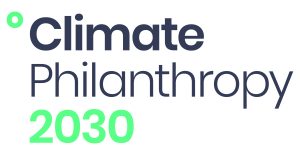 Brazil is a complex place. It is one of the most biodiverse countries in the world. The Amazon Rainforest alone is home to 10 percent of all wildlife on earth, including plants and animals that can only be found in Brazil, such as the Black Squirrel Monkey and the Pied Tamarin. Yet animal suffering is also at the core of Brazil’s economy.
Brazil is a complex place. It is one of the most biodiverse countries in the world. The Amazon Rainforest alone is home to 10 percent of all wildlife on earth, including plants and animals that can only be found in Brazil, such as the Black Squirrel Monkey and the Pied Tamarin. Yet animal suffering is also at the core of Brazil’s economy.
Rainforests are cleared at alarming rates to make space for growing livestock feed, resulting in habitat loss for wildlife species. Brazil is also the world’s second largest beef producer, producing an astounding 10.4 million metric tons of beef and veal in 2021, largely as a result of industrial-scale factory farming. In the same year, the value of Brazil’s agricultural exports reached $125 billion.
Such large-scale industrial agricultural practices inflict horrific suffering on animals – farmed and wild. Factory farming is also one of the largest contributors to greenhouse gas emissions and the destruction of biodiversity. Eighty percent of global deforestation and habitat loss is the result of intensive agriculture. Factory farming accounts for approximately 10 percent of total global greenhouse gas emissions in Brazil alone. Research from World Animal Protection revealed that JBS, the world’s largest meat processor, based in Brazil, accounted for CO2 emissions equivalent to 14 million cars in just one year.
At the forefront of protecting the rainforest and preventing the destruction of Brazil’s rich biodiversity and diverse habitats are local and Indigenous communities who live in these areas. Across the planet, Indigenous Peoples represent about 6 percent of the population, yet safeguard an astounding 80 percent of the world’s remaining biodiversity. In Brazil, forests outside of their protection are being lost to commercial farming and cattle ranching, extractive industries, infrastructure and other developments.
A 2021 UN report found that Indigenous Peoples of Latin America are by far the best guardians of the region’s forests – a crucial habitat for wild animals in Brazil. Over a 12-year period, deforestation rates in Indigenous territories in the Bolivian, Brazilian, and Colombian Amazon were between one-half and one-third of those in other similar forests. Between 2001-2021, forests managed by Indigenous Peoples and other communities were carbon sinks, whereas those that weren’t managed by them were, on average, net carbon sources.
Despite this mass of evidence, there is a gaping lack of recognition and support for these communities from both government and non-government sources – in particular the global philanthropic community. Less than 1 percent of all climate finance trickles down to Indigenous communities.
At COP26 in 2021, a pledge was made to channel $1.7 billion in five years directly to Indigenous communities, but this has not materialised. While major philanthropic funds have, in recent years, begun to target resources at climate change mitigation, minuscule sums of money reach those that are most effective at safeguarding swathes of land from destruction in the name of agricultural production.
Protecting animals and their habitats in the face of the global agricultural production juggernaut requires making philanthropic models much more accessible to Indigenous and local communities. For philanthropists, it means utilising resources strategically so that these communities are recognised and empowered in their role as the most effective stewards of the natural world. Above all, it means removing the barriers that prevent local and Indigenous communities from accessing funds to help them protect the forest: enabling them to take ownership of projects from planning to execution and to make the decisions about how to use resources from the outset.
Investing in scaling technological solutions, such as the use of satellite technology to monitor wildlife and forests, or systems to alert Indigenous communities of deforestation threats, is one simple way to aid their efforts. Indigenous communities also require formal recognition of their land rights, amid pervasive efforts by agribusinesses to prevent them from owning land that they did not physically occupy in 1988 – even if their ancestors historically inhabited this land.
These are all areas where the global philanthropic community can have a big impact, but alongside more direct funding, there needs to be a greater willingness to engage with and support local and Indigenous communities, who know their environments better than anyone else. Philanthropists should ask these communities how they can help them, and be prepared to listen and act on the answers.
The world’s richest wildlife habitats and last remaining carbon sinks, like the Amazon, are the foremost battleground for the protection of biodiversity, wildlife and the future of our planet. The relentless expansion of industrial agriculture threatens this future, and local and Indigenous communities are leading the way in the fight to protect it. By putting these groups at the centre of their strategies, philanthropists can build new relationships and channel their resources to tackle factory farming, safeguard animal species, and protect the planet’s precious remaining biodiversity. A new approach is long overdue.
Lisa Gunn is the Executive Director of the World Animal Protection Brazil



Comments (0)
Yes, I totally agreed with your talk